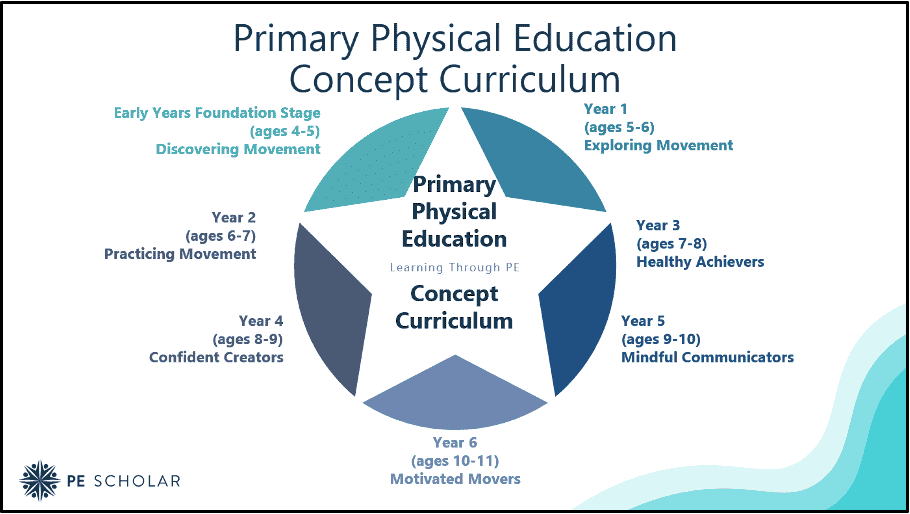
Introduction
This blog aims to provide a supportive exploration of a Key Stage 2, Year 3 PE lesson centered around attacking in invasion games. Our mission is to equip you with the knowledge and tools necessary to transform the concept of attacking into a captivating and educational experience for Year 3 students.
ABC of Primary PE

We strongly believe that character development is an integral part of PE. However, it should never take precedence over the aforementioned three goals. If a teacher dedicates too much time to discussing a concept (e.g., leadership) when students should be physically active, we risk missing one of the core objectives of our lesson. Similarly, if a teacher solely focuses on a concept without adequately developing movement competence, it does not align with best practices in PE. The Concept should complement the first two aims and serve as an inclusive catalyst, engaging all learners by establishing a pertinent and meaningful connection to life beyond specific sports skills.
Opportunities to Develop Physical Competence in the Lesson
Now, let’s focus on our Year 3 PE lesson, which revolves around the concept of attacking in invasion games. Attacking is not only crucial in sports but also lays the groundwork for understanding various other physical education concepts.
- Fundamental to Invasion Games: Attacking is the bedrock of understanding the basic concepts of invasion games and numerous other sports. It teaches students how to seize opportunities and create openings to launch an attack.
- Supports Ball/Object Handling: Attacking encourages students to improve their ball handling skills, be it dribbling, passing, or shooting. These skills are transferable to a wide range of sports.
- Fosters Decision Making: To be effective attackers, students must make quick decisions. They learn when to pass, dribble, or shoot, enhancing their decision-making abilities on and off the field.
- Teamwork and Movement: Attacking strategies require teamwork and understanding movement on and off the ball. This helps students appreciate the importance of coordinated efforts in sports.
- Preparation for Complexity: Teaching attacking concepts in Year 3 prepares students for more complex applications of these skills in the future as they progress through the PE curriculum.
Lesson Overview
Activity 1
Begin with a small-sided game that challenges students to attack a target or goal. Place a hoop in the center of a square created by four cones. Divide the students into small groups (e.g., 3 attackers vs. 1 defender). The attackers’ goal is to retrieve equipment from the hoop and place it on a cone while the defender tries to tag them. If tagged, the equipment must be returned. The key is for students to work together and strategize on when and how to attack.
Link Questions:
- Why is attacking important in this game?
- How did you work together to launch an attack?
- How did understanding the importance of attacking help you succeed?
- How can attacking in PE benefit you in other games or sports?
Activity 2
This game introduces the idea of adapting to changing conditions. Small teams (3-4 players per team) compete to score goals. If a team scores, the opposing team gets to move their goal to a different position. This encourages students to think strategically and adapt their attacking approach based on the new goal placement.
Activity 3
This adapted version of Capture the Flag involves small teams working together to retrieve items from an opponent’s “jail” and return them to their side. Students must tag teammates out of jail to free them. The game promotes teamwork, strategy, and decision-making, as students aim to score points for their team.
Conclusion
By incorporating these engaging activities and concepts into your Year 3 PE lesson, you will empower your students to become more proficient attackers in invasion games. This not only enhances their physical skills but also lays the foundation for understanding the broader aspects of teamwork, strategy, and decision-making in sports. Remember the ABCs of Primary PE: Active for sustained periods of time, build a positive relationship with PE and Competence development. With this strong foundation, you can help your students become well-rounded PE and sports enthusiasts.


Responses